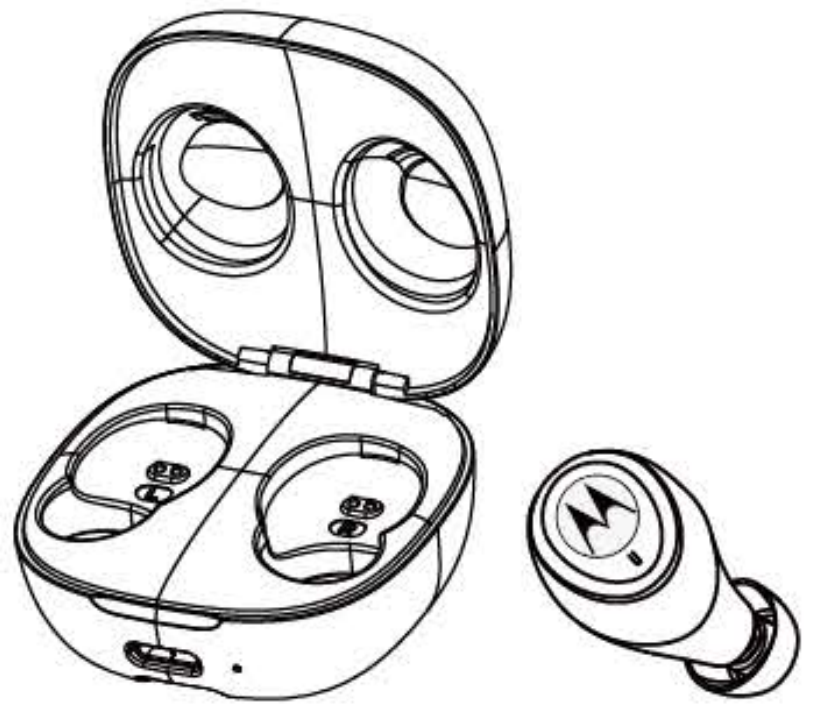Motorola MBCHR Motobuds Charge User Guide

Model No. : Motobuds Charge
Frequency Band: 2.402 – 2.480GHz
Maximum RF power: 6 dBm
Working temperature: -10°C – 45°C
Quick Start Guide
FCC ID: 2ARRB-MBCHR
IC: 20353-MBCHR

Charging:

Fully charge before use
The device can be powered through a micro USB from any CE-compliant power source that implements the European interface as requested by EN 301 489-52.
2. Pairing:
2.1 Ensure both buds are inside the charging case and take out both buds. The buds will flash blue and red.
3. Fitting:
31 To optimize the best fit and audio experience. it is recommended to try different earbud sizes.
| Additional Operation | |
| Factory reset | 1. Ensure earbuds are not connected to phone 2. Double press MFB and then hold MFB for 5 seconds until LED shows blue and red 3. Put both buds into the charging case |
| Reject a call | MFB 2sec |
| Receive incoming and on hold ongoing call | Single Press MFB |
| LED Indicator | |
| Pairing | Red-blue flash |
| Standby | Blue flash |
| Charging | Red steady |
| Fully charged | Off |
| Battery low | Red flash |
FCC Regulatory Compliance
This device complies with Part 15 of the FCC Rules. Operation is subject to the following two conditions: (1) this device may not cause harmful interference, and (2) this device must accept any interference received, including interference that may cause undesired operation.
changes or modifications not expressly approved by the party responsible for compliance could void the user’ s authority to operate the equipment.
This equipment has been tested and found to comply with the limits for a Class B digital device, pursuant to Part 15 of the FCC Rules. These limits are designed to provide reasonable protection against harmful interference in a residential installation. This equipment generates, uses, and can radiate radio frequency energy and, if not installed and used in accordance with the instructions, may cause harmful interference to radio communications. However, there is no guarantee that interference will not occur in; If this equipment does cause harmful interference to radio or television reception, which can be determined by turning the equipment off and on, the user is encouraged to try to correct the interference by one or more of the following measures:
— Reorient or relocate the receiving antenna.
— Increase the separation between the equipment and receiver.
— Connect the equipment into an outlet on a circuit different from that to which the receiver is connected.
— Consult the dealer or an experienced radio/TV technician for help.
This equipment complies with FCC radiation exposure limits set forth for an uncontrolled environment. This transmitter must not be co-located or operating in conjunction with any other antenna or transmitter.
IT Regulatory Compliance
This device contains license-exempt transmitter(s)/receiver(s) that comply with Innovation, Science, and Economic Development Canada’s license-exempt RSS(s). Operation is subject to the following two conditions: (1) This device may not cause interference. (2) This device must accept any interference, including interference that may cause undesired operation of the device.